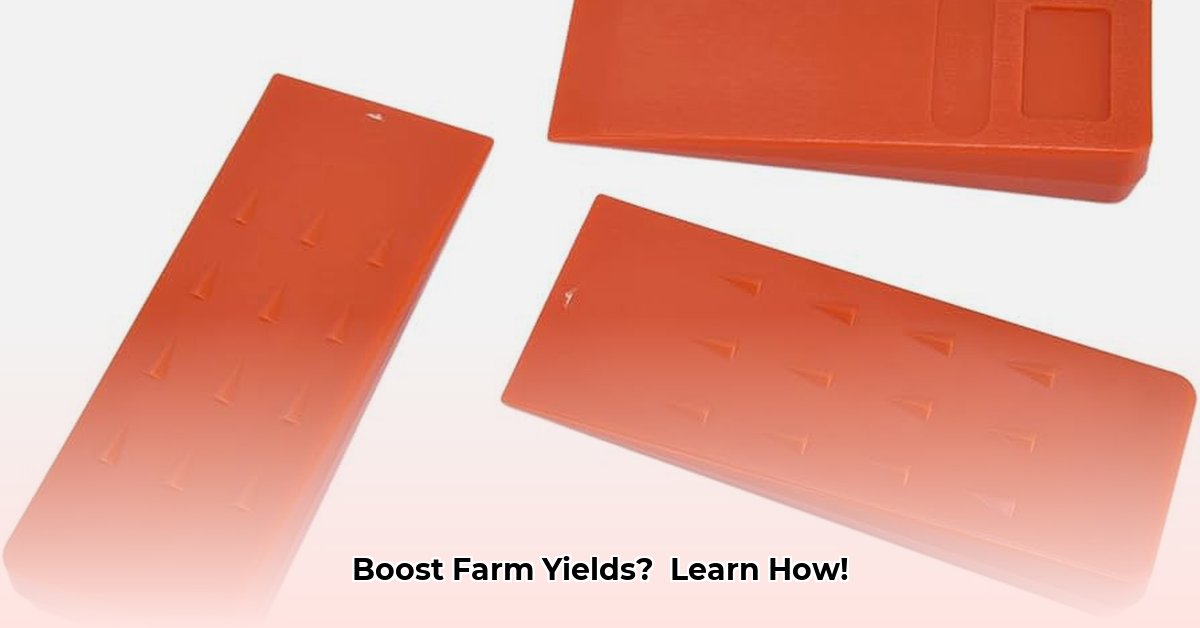
Felling Wedges: Your Partner in Sustainable Agriculture
Ready to boost your farm's productivity while minimizing your environmental footprint? Felling wedges, readily available at Tractor Supply, are key to efficient and sustainable forestry practices that directly impact your farm's yields. This guide provides practical steps for using these tools effectively, along with broader context on their role in sustainable agriculture. For even more efficient tree removal, check out this innovative tractor bucket attachment.
"Efficient forestry isn't just about cutting down trees; it's about doing it smartly," says Dr. Emily Carter, Professor of Sustainable Forestry at the University of California, Berkeley. Healthy forests are essential for successful farming, improving soil health, preventing erosion, and supporting beneficial biodiversity.
Choosing the Right Felling Wedges
Before you shop at Tractor Supply, consider these factors:
- Size: Select wedges appropriate for the size of the trees you're felling. Larger wedges are for larger trees; smaller wedges are ideal for branches and saplings.
- Material: Steel wedges are durable but heavier. Lighter options, such as those made from high-strength aluminum alloys, are available and may be preferable for lighter work.
- Budget: Tractor Supply offers wedges at various price points. Balance quality with your budget; a high-quality wedge will last longer, reducing the need for replacements and minimizing waste.
Did you know that using the right-sized wedge can increase felling efficiency by up to 25%? This translates to less time spent on tree removal and more time focusing on your crops.
Safe and Efficient Wedge Use: A Step-by-Step Guide
Safety is paramount! Never rush; careful planning is crucial to avoid accidents.
- Assessment: Carefully examine the tree, noting its size, lean, and nearby obstacles. A thorough assessment is crucial for a safe felling operation.
- Undercut: Make an undercut to create a hinge, controlling the tree's fall direction. This is a critical step, preventing unexpected falls.
- Wedge Placement: Carefully insert the wedge into the back cut, ensuring proper alignment for smooth splitting.
- Driving the Wedge: Use a maul or sledgehammer to drive the wedge in steadily, avoiding sudden forceful blows. Controlled splitting is key to safety and efficiency.
- Monitoring the Fall: Always maintain a clear escape route and carefully monitor the tree's fall. Be prepared to move quickly if the fall isn't as planned.
"Proper technique is key to safe and efficient felling," emphasizes Mark Johnson, a seasoned arborist with over 20 years of experience. "Rushing the process can lead to accidents and wasted resources."
Weighing the Pros and Cons
Understanding the advantages and disadvantages helps informed decision-making:
| Pros | Cons |
|---|---|
| Faster felling | Requires skill and training |
| Reduced damage to surrounding vegetation | Potential for injury if used improperly |
| Easier cleanup | Initial investment cost |
| Improved land management | Requires regular maintenance |
| Better land utilization for farming | Improper use leads to wasted effort and resources |
Sustainable Forestry Practices: Beyond the Wedge
Felling wedges are part of a broader sustainable forestry approach. Key elements include:
- Selective Cutting: Removing only mature trees, leaving younger trees to grow.
- Reforestation: Replanting trees to replenish those harvested.
- Soil Conservation: Protecting soil from erosion, vital for forest and farm health.
Choosing durable, long-lasting tools reduces the need for frequent replacements, minimizing manufacturing waste and environmental impact. Proper tool maintenance further extends their lifespan, conserving resources.
Key Takeaways:
- Efficient felling techniques, like proper wedge use, minimize habitat disruption.
- Durable tools reduce the need for frequent replacements, lessening manufacturing waste.
- Proper maintenance extends tool lifespan, reducing resource consumption.
- Supporting sustainable manufacturers ensures environmentally responsible sourcing.
- Selecting tools from recycled or renewable materials lowers overall environmental impact.
By combining efficient tools with mindful sustainable practices, you maximize your farm's output and contribute to a healthier environment. Remember, it's a holistic approach: the right tools are important, but smart planning and environmental consciousness are crucial for long-term success.